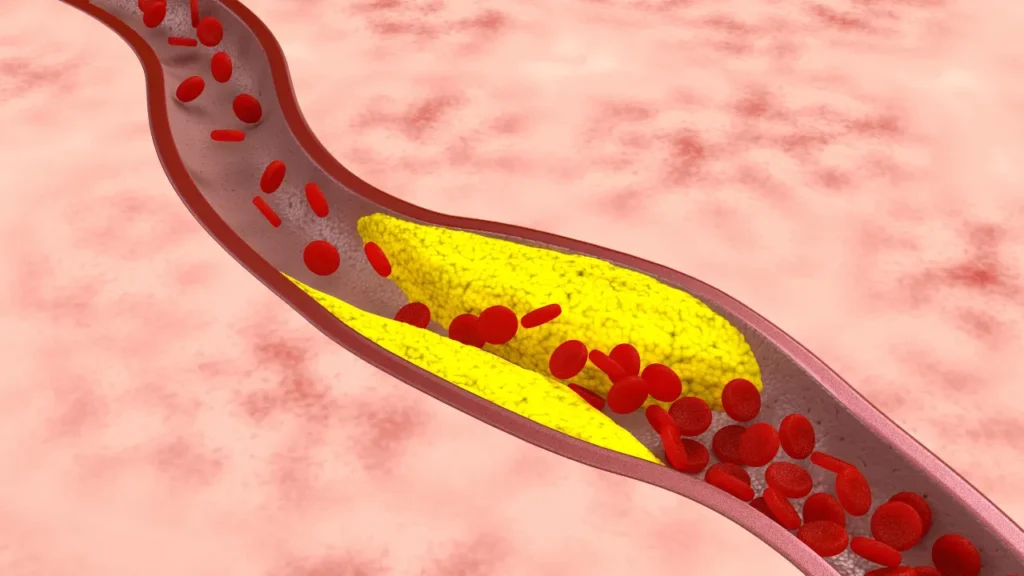Because of its unique qualities, tragacanth—a natural gum made from the dried sap of many species of Middle Eastern legumes of the family Astragalus—has been used for millennia in traditional medicine and various industrial applications. This gum is prized for its possible health advantages, especially in improving alertness, attention, and cognition, in addition to its use in culinary items as a stabilizer, thickener, and emulsifier. The nature of tragacanth gum, its health advantages, the ideal dosage, any adverse effects, any drug interactions, and the most responsible way to take it as a nootropic supplement are all covered in this article.
You May Also Like:
Dr Emil Nutrition Lion’s Mane Reviewed: A Leading Nootropic Mushroom Product
Tragacanth: Benefits, Dosage, Side Effects, Drug Interactions, and Other Important Information is an original (NootropicsPlanet) article.
Nature of Tragacanth
Natural gum, known as tragacanth, is made from the sap of several Astragalus plant species, which are primarily found in the Middle East. Cuts made in the plant’s stem and root collect this viscous fluid, which is dried into strips or powder. Because of its many uses, tragacanth has been used historically in traditional medicine, food applications, and as a stabilizer in several industrial processes.
Health Benefits of Tragacanth
Tragacanth gum’s prebiotic and anti-inflammatory qualities are responsible for its application in improving alertness, focus, and cognition. Prebiotics like tragacanth gum encourage good gut flora formation, essential for the gut-brain axis and may impact mental and cognitive health. Because inflammation can have a negative impact on cognitive functions, tragacanth gum’s anti-inflammatory qualities may also play a role in its nootropic benefits. Due to its unique makeup and qualities, tragacanth gum has the potential to be beneficial for several health conditions. These include being a source of polysaccharides with thickening and emulsifying properties, dietary fiber, and prebiotics. These advantages cover many health issues, including immune system support and digestive health.
- Enhanced Cognitive Function: The gut-brain axis is a bidirectional communication system between the gut microbiota and the brain, influencing brain health and function. By fostering a healthy gut microbiome, tragacanth gum may indirectly support cognitive functions, including memory, attention, and processing speed.
- Mood Regulation: The anti-inflammatory effects of tragacanth gum can potentially reduce the risk of neuroinflammation, which has been linked to mood disorders. Thus, regular consumption of tragacanth gum might have a positive impact on mood regulation and reduce the risk of depression and anxiety.
- Digestive Health: One of the primary health benefits of tragacanth gum is its positive impact on digestive health. As a soluble fiber, tragacanth gum can absorb water in the gut, helping to regulate bowel movements and prevent constipation. Forming a gel-like substance in the digestive tract can ease the passage of stool and improve overall bowel health. Additionally, its prebiotic nature supports the growth of beneficial gut bacteria, which is crucial for maintaining a healthy microbiome. This balance of gut flora is not only vital for digestive health but also plays a role in metabolic and immune functions.
- Prebiotic Effects and Gut Health: Tragacanth gum’s prebiotic properties feed beneficial bacteria in the gut, such as Lactobacillus and Bifidobacterium species, which are essential for a healthy digestive system. These bacteria help in the digestion of food, the production of vital nutrients like vitamins B and K, and protection against pathogenic bacteria. By promoting a healthy balance of microbiota, tragacanth gum contributes to improved gut health and can help manage or prevent gastrointestinal disorders like irritable bowel syndrome (IBS) and inflammatory bowel disease (IBD).
- Immune System Support: A healthy gut microbiome, supported by prebiotic fibers like tragacanth gum, is essential for a robust immune system. The gut is a major site of immune activity, and a balanced microbiome can help regulate immune responses and reduce inflammation. By enhancing the growth of beneficial bacteria, tragacanth gum may help strengthen the body’s defense mechanisms against infections and diseases.
- Anti-inflammatory Properties: Tragacanth gum exhibits anti-inflammatory properties that may help reduce the risk of chronic inflammation-related conditions, such as heart disease, diabetes, and certain cancers. Inflammation is a root cause of many chronic diseases, and by mitigating inflammatory responses, tragacanth gum can contribute to overall health and wellness.
- Blood Sugar and Cholesterol Management: Tragacanth gum’s gel-forming property can slow sugar’s absorption in the bloodstream, helping to control blood glucose levels. This makes it potentially beneficial for people with diabetes or those at risk of developing diabetes. Additionally, tragacanth gum can bind to cholesterol in the gut, preventing its absorption and thereby aiding in the management of cholesterol levels. This effect can contribute to cardiovascular health by reducing the risk factors associated with heart disease.
- Weight Management: By absorbing water and expanding in the stomach, tragacanth gum can increase the feeling of fullness or satiety, which may help reduce overall calorie intake. This property, combined with its low caloric content, makes tragacanth gum useful in weight management and obesity prevention strategies.
- Skin Health: Externally applied, tragacanth gum can be a moisturizer due to its water-holding capacity, potentially benefiting dry skin conditions. Its emollient properties can help soothe and protect the skin, contributing to overall skin health and appearance.
In conclusion, tragacanth gum offers multiple health benefits, particularly digestive health, immune system support, and chronic disease prevention. Its prebiotic effects, anti-inflammatory properties, and ability to manage blood sugar and cholesterol levels underscore its potential as a valuable dietary supplement. However, as with any supplement, it’s important to consider individual health conditions and consult a healthcare professional before incorporating tragacanth gum into your diet.

Chemistry of Tragacanth
The chemical composition of tragacanth gum is complex. It primarily consists of two major components, tragacanthin and bassorin, which account for its unique physicochemical properties.
- Tragacanthin: This component is water-soluble and forms a viscous gel when dissolved in water. Tragacanthin is a polysaccharide composed of galacturonic acid, fucose, xylose, and galactose. The specific arrangement and proportion of these monosaccharides contribute to the emulsifying properties of tragacanthin, enabling it to stabilize oil-water mixtures by reducing surface tension and forming stable emulsions.
- Bassorin: Bassorin makes up a larger fraction of tragacanth gum but does not dissolve in water; instead it swells to form a gel-like dispersion. This behavior is crucial for its application as a thickening agent. Bassorin is a complex polysaccharide with a high molecular weight, consisting mainly of galactose, arabinose, and glucuronic acid. The ability of bassorin to absorb water and swell contributes significantly to the viscosity of tragacanth gum solutions, a key characteristic leveraged in various applications.
The gel matrix created when tragacanthin and bassorin interact with one another in the presence of water can absorb and retain large volumes of water. This characteristic is especially useful as an excipient for controlled medication release in medicines, moisture retention, and texture enhancement in food applications.
Furthermore, the rheological characteristics of tragacanth gum polysaccharides are influenced by their distinct branching and molecular weight. Tragacanth gum exhibits shear-thinning behavior, which means that under shear stress, its viscosity reduces. This characteristic is useful when making products that need to be easily pumped or dispersed during manufacturing. However, they must also stay stable and not separate in the finished product.
Physiological Mechanism of Action
Tragacanth gum’s physiological mechanism of action, particularly in enhancing alertness, focus, and cognition, can be explored through its prebiotic effects, modulation of the gut-brain axis, and anti-inflammatory properties. While the direct neurological impacts of tragacanth on cognitive functions have not been extensively documented, its indirect effects on gut health and systemic inflammation provide a plausible mechanism for its nootropic benefits.
Prebiotic Effects and the Gut-Brain Axis: Tragacanth gum’s role as a prebiotic is pivotal in its mechanism of action related to cognitive functions. Prebiotics are dietary fibers that the human body cannot digest. They serve as food for beneficial gut bacteria, promoting their growth and activity. The fermentation of prebiotics by these gut bacteria produces short-chain fatty acids (SCFAs), such as acetate, propionate, and butyrate, which have various health benefits, including brain health.
Modulation of the Gut-Brain Axis: The gut-brain axis is a complex communication network that links the gastrointestinal tract’s enteric nervous system (ENS) with the central nervous system (CNS). This communication occurs via neural, endocrine, immune, and metabolic pathways. SCFAs produced from the fermentation of tragacanth gum can cross the blood-brain barrier and influence brain function. They have been shown to reduce neuroinflammation, promote the growth of new neurons (neurogenesis), and enhance memory and learning. Additionally, SCFAs can modulate the release of gut hormones and neurotransmitters that affect cognitive functions and mood.
Supporting a Healthy Gut Microbiome: By enhancing the growth of beneficial bacteria, tragacanth gum helps maintain a healthy gut microbiome, which is crucial for optimal brain function. An imbalance in gut microbiota has been associated with various neurologic and psychiatric disorders. Therefore, the prebiotic effect of tragacanth gum contributes to cognitive health by supporting microbial balance in the gut.
Reduction of Systemic Inflammation: The SCFAs produced from the fermentation of tragacanth gum by gut microbiota have anti-inflammatory effects beyond the gut, reducing systemic inflammation. This can lead to a decreased risk of inflammation-related cognitive decline.
Neuroprotection: By mitigating inflammation, tragacanth gum may help protect the brain from neuroinflammation, oxidative stress, and other harmful processes that can impair cognitive functions. The anti-inflammatory action of tragacanth gum could thus contribute to maintaining or enhancing cognitive abilities, including alertness and focus.
Anti-inflammatory Properties: inflammation is a known factor that can impair cognitive functions and contribute to the development of neurodegenerative diseases. Tragacanth gum exhibits anti-inflammatory properties, which may affect its potential cognitive benefits.


Optimal Dosage of Tragacanth
The few research investigations that particularly examine tragacanth gum’s impact on cognitive functions make it difficult to determine the ideal dosage for nootropic advantages. Depending on the tragacanth’s form and intended use, dosages in the research that are now available vary greatly. It is suggested that the recommended dosage for dietary supplements, which usually varies between 1 and 5 grams daily, be adhered to as the manufacturer advises. It’s essential to begin with a smaller dose to evaluate personal tolerance because tolerance levels can differ among individuals.
Side Effects of Tragacanth
When taken in food quantities, tragacanth gum is generally regarded as safe for most individuals. Like any dietary supplement, however, it may have adverse consequences in certain people. When taken in significant amounts, gastrointestinal problems such gas, bloating, and diarrhea are possible adverse effects. People who have previously had allergies or hypersensitivity to plant gums ought to stay away from tragacanth.


Potential Substance Interactions with Tragacanth
The interactions between tragacanth gum and other substances, including pharmaceuticals, have not been thoroughly studied. However, tragacanth gum’s fiber content and gel-forming abilities may cause absorption issues if used together with oral drugs. It is best to take tragacanth gum a few hours before or after other medications to reduce this danger. As usual, speaking with a healthcare professional before beginning any new supplement is crucial, especially if you’re using medication.
Best Responsible Uses of Tragacanth
To harness the potential nootropic benefits of tragacanth gum responsibly, consider the following guidelines:
- Start with a Low Dose: Begin with a lower dose than the recommended maximum to assess your body’s response. Gradually increase the dosage if necessary and well-tolerated.
- Monitor for Side Effects: Consider any adverse effects after consuming tragacanth gum, particularly gastrointestinal symptoms. Reduce the dosage or discontinue use if significant side effects occur.
- Consult Healthcare Providers: Before adding tragacanth gum to your supplement regimen, especially if you have pre-existing health conditions or are taking medications, consult a healthcare professional.
- Focus on a Balanced Diet: While tragacanth gum can contribute to cognitive health as part of a broader supplement strategy, it should not replace a balanced diet rich in nutrients essential for brain health, including omega-3 fatty acids, antioxidants, and vitamins.
Tragacanth:
Conclusion
Tragacanth’s unique properties make it valuable in various medical applications, including pharmaceuticals, dental products, and food-thickening agents. While research on the specific health benefits of tragacanth is ongoing, its long history of use in traditional medicine systems and its recognized safety profile suggest its potential as a beneficial natural remedy. However, as with any natural supplement or remedy, it’s essential to use tragacanth under the guidance of a healthcare professional, especially for individuals with specific health concerns or conditions. Overall, tragacanth represents a promising natural resource with the potential to enhance health and well-being in various ways.


References:
- Tragacanth Uses, Benefits & Dosage. Retrieved from: https://www.drugs.com/npp/tragacanth.html
- Tragacanth – Uses, Side Effects, and More. Retrieved from: https://www.webmd.com/vitamins/ai/ingredientmono-688/tragacanth
- Gum Tragacanth (GT): A Versatile Biocompatible Material beyond Borders. Retrieved from: https://www.ncbi.nlm.nih.gov/pmc/articles/PMC8000171/
Important Note: The information contained in this article is for general informational purposes only, and should not be construed as health or medical advice, nor is it intended to diagnose, prevent, treat, or cure any disease or health condition. Before embarking on any diet, fitness regimen, or program of nutritional supplementation, it is advisable to consult your healthcare professional in order to determine its safety and probable efficacy in terms of your individual state of health.
Regarding Nutritional Supplements Or Other Non-Prescription Health Products: If any nutritional supplements or other non-prescription health products are mentioned in the foregoing article, any claims or statements made about them have not been evaluated by the U.S. Food and Drug Administration, and such nutritional supplements or other health products are not intended to diagnose, treat, cure, or prevent any disease.
